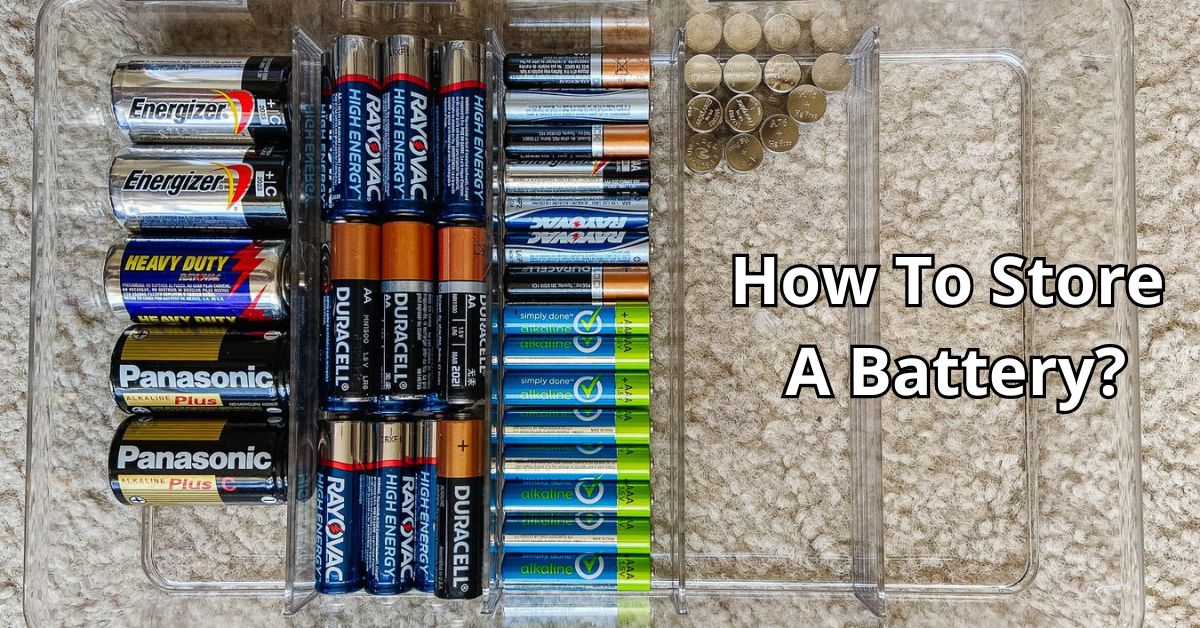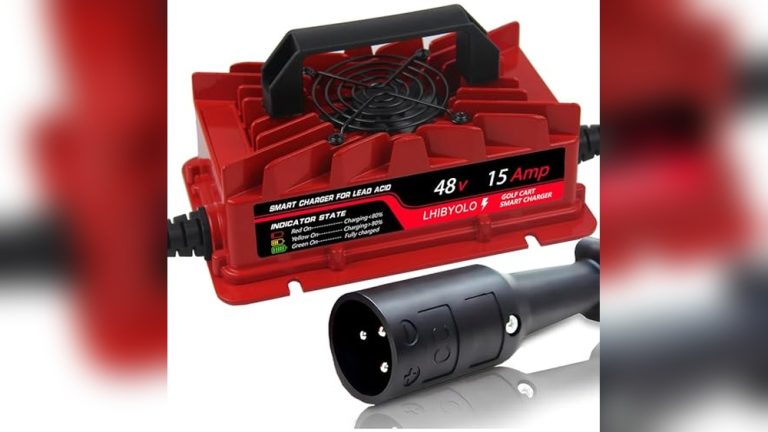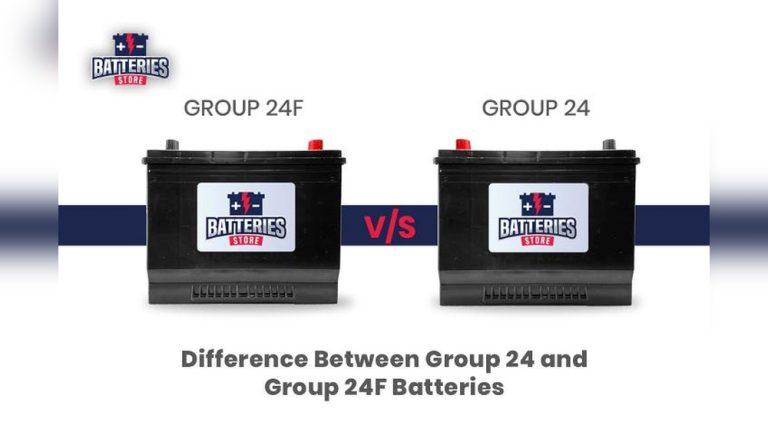How To Store A Battery: Essential Tips for Longevity
Storing a battery properly ensures it lasts longer. It also maintains its performance.
Batteries are essential in our daily lives, powering many devices. Whether it’s a car battery, phone battery, or rechargeable ones, proper storage is key. Incorrect storage can lead to reduced lifespan or even damage. Understanding the right way to store a battery can save you time, money, and effort.
This guide will show you the steps to keep your batteries in the best condition. From temperature tips to storage locations, we’ll cover all you need to know. Keep reading to learn how to store your batteries effectively and safely.

Choosing The Right Battery
Storing a battery properly is essential for extending its life. The first step is choosing the right battery. Different batteries have different storage requirements. Let’s explore the types of batteries and their specifications.
Types Of Batteries
Not all batteries are the same. Here are some common types:
- Alkaline Batteries: These are standard, non-rechargeable batteries.
- Lithium-ion Batteries: Common in electronics and rechargeable.
- Nickel-Cadmium (NiCd) Batteries: Older rechargeable type, often in tools.
- Nickel-Metal Hydride (NiMH) Batteries: Newer than NiCd, rechargeable.
- Lead-Acid Batteries: Used in cars and backup systems.
Battery Specifications
Each battery type has unique specifications. Understanding these helps in proper storage.
| Battery Type | Voltage | Storage Temperature |
|---|---|---|
| Alkaline | 1.5V | 10°C to 25°C |
| Lithium-ion | 3.6V – 3.7V | 0°C to 25°C |
| Nickel-Cadmium | 1.2V | 0°C to 25°C |
| Nickel-Metal Hydride | 1.2V | 0°C to 25°C |
| Lead-Acid | 2V | 10°C to 25°C |
Note: Always store batteries in a cool, dry place. Avoid extreme temperatures. Keep them in their original packaging if possible.
Following these guidelines helps maintain battery life and performance.

Credit: www.eblofficial.com
Ideal Storage Conditions
Store a battery in a cool, dry place. Keep it away from direct sunlight and extreme temperatures. Ensure the storage area is clean and free of dust.
Storing a battery properly can extend its lifespan. The right conditions help in maintaining its efficiency. This section discusses the ideal storage conditions for batteries.
Temperature Control
Store batteries in a cool place. High temperatures can damage them. The ideal temperature range is between 50°F and 77°F. Avoid places with direct sunlight. Extreme cold can also harm the battery. Keep them away from freezing temperatures.
Humidity Levels
Humidity affects battery performance. Store batteries in a dry environment. High humidity can cause corrosion. Aim for a humidity level below 50%. Use silica gel packs to absorb moisture. Ensure the storage area is well-ventilated. This helps in maintaining optimal humidity levels.
Battery Charge Levels
Maintaining the right charge levels is crucial for battery longevity. Proper storage ensures your battery remains functional and ready for use when needed.
Optimal Charge Percentage
Storing your battery at the optimal charge percentage helps prolong its life. Aim for a charge level between 40% to 60%. This range keeps the battery stable and prevents capacity loss over time.
Here is a table to guide you:
| Charge Level | Stability |
|---|---|
| 0% – 20% | High Risk of Damage |
| 20% – 40% | Moderate Risk |
| 40% – 60% | Optimal |
| 60% – 80% | Moderate Risk |
| 80% – 100% | High Risk of Overcharging |
Regular Maintenance Charging
Even in storage, batteries lose charge over time. Perform regular maintenance charging to keep them at the optimal level.
Follow these steps:
- Check battery charge every three months.
- Recharge to 40%-60% if below optimal level.
- Use a quality charger to avoid damage.
Regular maintenance ensures your battery remains healthy and ready for use.
Proper Storage Containers
Storing batteries correctly extends their lifespan and ensures safety. Using proper storage containers is essential. Let’s explore the recommended containers and why avoiding metal contact is crucial.
Recommended Containers
Selecting the right container is vital. Plastic containers are excellent. They are non-conductive and protect batteries from physical damage.
Battery cases are another great option. They are designed specifically for battery storage. These cases prevent short circuits and keep batteries organized.
Original packaging is also a good choice. It provides the best fit and safety for batteries. Always keep the packaging if possible.
| Container Type | Advantages |
|---|---|
| Plastic Containers | Non-conductive, durable, and protective |
| Battery Cases | Specifically designed, prevent short circuits |
| Original Packaging | Best fit, designed for battery safety |
Avoiding Metal Contact
Metal contact is dangerous for batteries. It can cause short circuits and fires. Always avoid storing batteries in metal containers.
Use non-conductive materials like plastic or wood. These materials prevent accidental short circuits.
Keep batteries away from metal objects. Items like keys, coins, or jewelry can create a short circuit if they touch the battery terminals.
- Store in non-conductive containers.
- Keep away from metal objects.
- Ensure battery terminals do not touch metal surfaces.
Safety Precautions
Storing a battery safely is crucial for avoiding accidents. Proper handling can prevent leaks and fires, ensuring your safety and the longevity of the battery. Follow these safety precautions to store your batteries correctly and avoid potential hazards.
Handling Leaks
Always wear gloves when handling a leaking battery. This prevents skin contact with harmful chemicals. Dispose of leaking batteries properly to avoid environmental damage. Use a sealable plastic bag to contain the leak during disposal. Never touch a leaking battery with bare hands. Clean the storage area with a damp cloth if a leak occurs. Ensure the area is well-ventilated to avoid inhaling fumes.
Fire Prevention
Keep batteries away from flammable materials. Store them in a cool, dry place to minimize fire risk. Avoid exposing batteries to direct sunlight or heat sources. Use a fireproof container for added safety. Check batteries regularly for signs of damage or swelling. Do not store different types of batteries together. This can cause a short circuit, leading to a fire. Ensure battery terminals are covered to prevent accidental contact.

Credit: www.wikihow.com
Environmental Considerations
Storing batteries properly is not just about preserving their life. It also involves ensuring environmental safety. Poor battery storage can lead to harmful leaks and chemical spills. This can damage ecosystems and pose health risks. Let’s explore key environmental considerations you should keep in mind.
Disposal Regulations
Different regions have varying laws on battery disposal. It is crucial to be aware of these regulations. Improper disposal can result in legal penalties and environmental harm. Here are some general rules:
- Check local guidelines for battery disposal.
- Use designated recycling centers for batteries.
- Never throw batteries in household trash.
Following these regulations helps in reducing pollution and conserves resources. Make sure to stay updated on your area’s disposal laws.
Eco-friendly Practices
Adopting eco-friendly practices ensures that your battery storage is sustainable. Here are some tips to consider:
- Use rechargeable batteries to minimize waste.
- Store batteries in a cool, dry place to extend their life.
- Opt for batteries with low environmental impact.
Implementing these practices helps in lowering environmental footprint. It also promotes a healthier planet.
| Practice | Benefit |
|---|---|
| Rechargeable Batteries | Reduces waste |
| Cool, Dry Storage | Prolongs battery life |
| Low Impact Batteries | Minimizes environmental harm |
Transporting Batteries
Transporting batteries can be tricky. Batteries contain chemicals and can be hazardous if not handled properly. It’s crucial to know how to package and transport them safely to avoid accidents. This section will cover safe packaging and regulatory compliance for transporting batteries.
Safe Packaging
Use sturdy boxes for battery transportation. Ensure the batteries are snugly packed to avoid movement. Wrap each battery individually in non-conductive material. This prevents short circuits. Use packing peanuts or bubble wrap for extra cushioning. Label the box with a “Fragile” sticker. This will alert handlers to take care.
Regulatory Compliance
Follow local and international regulations for battery transport. Check guidelines provided by agencies like the Department of Transportation (DOT) or International Air Transport Association (IATA). Some batteries may need special packaging or documentation. Make sure to comply with these rules to avoid fines or delays.
Common Mistakes
Storing batteries incorrectly can shorten their life. Common mistakes can also lead to safety hazards. Knowing what to avoid is crucial. Here are some common mistakes people make when storing batteries.
Overcharging Risks
Overcharging a battery can cause serious damage. When a battery is left on a charger for too long, it can overheat. This can lead to a reduced lifespan. In extreme cases, it may cause the battery to leak or even explode.
To avoid overcharging:
- Use a charger with an automatic shut-off feature.
- Set a timer to remind you to unplug the charger.
- Read the battery’s manual for recommended charging times.
Exposure To Extreme Conditions
Batteries do not like extreme conditions. High temperatures can cause them to swell or leak. Cold temperatures can reduce their capacity and efficiency.
To store batteries safely:
- Keep them in a cool, dry place.
- Avoid storing them in direct sunlight.
- Do not store batteries in the refrigerator or freezer.
Here is a quick reference:
| Condition | Effect on Battery |
|---|---|
| High Temperature | Swelling, leakage |
| Cold Temperature | Reduced capacity |
By avoiding these common mistakes, you can extend the life of your batteries. Always be mindful of how you store and charge them.
Frequently Asked Questions
How Do You Store A Battery Long-term?
Store batteries in a cool, dry place. Avoid extreme temperatures and moisture. Keep them at around 50% charge. Use original packaging if possible.
Should Batteries Be Stored Fully Charged?
No, batteries should not be fully charged for storage. Store them at around 50% charge to maintain their longevity and performance.
Can You Store Batteries In The Refrigerator?
It’s not recommended to store batteries in the refrigerator. The cold can cause condensation and damage. Keep them in a cool, dry place instead.
How Often Should You Check Stored Batteries?
Check stored batteries every few months. Look for leaks, corrosion, and charge levels. This ensures they remain in good condition and safe to use.
Conclusion
Storing a battery properly extends its life. Remember to keep it cool and dry. Avoid direct sunlight and high temperatures. Check its charge level regularly. Disconnect it from devices when not in use. Proper storage ensures safety and efficiency. Follow these tips for better battery performance.
Safe storage means longer-lasting power.







